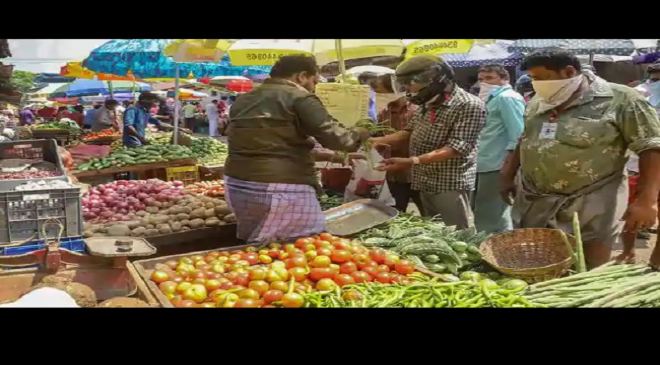Out of the 11% increase in the price of the vegetarian thali, 7% can be attributed to tomato prices. The cost also rose due to a 20% jump in the price of onion and a 16% rise in the price of potato on a monthly basis, CRISIL said
Food inflation in July: The cost of a home-cooked vegetarian thali increased by 11%, non-veg thali rose by 6% in July, CRISIL’s Market Intelligence and Analytics division said in its analysis. The cost of home-cooked food rose due to the increasing cost of key vegetables – onion, tomato, and potato.
Read More:- 18% Discount On Flight Booking; This Airline Announce A Day Sale, Check Coupon Code
“Out of the 11% increase in the price of the vegetarian thali, 7% can be attributed to tomato prices. The cost also rose due to a 20% jump in the price of onion and a 16% rise in the price of potato on a monthly basis,” CRISIL said in its monthly report.
“Tomato prices have increased 55% on-month, to Rs 66 a kg in July from 42 rupees a kg in June,” CRISIL said.
The prices, however, fell 4% year-on-year to Rs 32.6 in July 2024 and that of a non-vegetarian thali was down 9% from a year ago to Rs 61.4, CRISIL said. The report attributed the fall in the cost of the vegetarian thali to a 40% on-year drop in tomato prices. Tomato prices had touched Rs 110 a kg in July 2023.
Also Read– Bank locker rules: Permitted and prohibited items, bank responsibilities, and locker operations
“The cost of the vegetarian thali could have declined further, but an on-year 65% increase in prices of onion and 55% increase in prices of potato prevented that from happening. The non-vegetarian thali cost dropped because of an 11% fall in prices of broiler chicken. Broiler prices fell because of a high base of last year,” the report noted.
On a monthly basis, the cost of the non-vegetarian thali increased at a slower pace compared to the vegetarian thali. The slow rise in the cost of the non-vegetarian thali was due to stable prices of broiler, which comprises more than 50% of the total price of the non-vegetarian thali, the report said.
Also Read : Digital payment safety: RBI’s new rules to keep your transactions secure
Tomato prices
The rise in tomato prices was mainly because of high temperatures which impacted the summer crop in key states of Karnataka and Andhra Pradesh. Prices also rose due to scattered rainfall in May in Karnataka, which escalated whitefly infestation and impacted the crop output, the report said.
Earlier this week it was reported tomato prices may experience a significant surge in the near future due to extensive rainfall causing devastation in Himachal Pradesh. This region serves as a key provider of this essential kitchen commodity to numerous markets in northern India, as reported by traders at Azadpur mandi. The consequential impact of heavy rains is likely to result in crop damage and road disruptions, consequently affecting the supply chain. Manoj Kumar, a vegetable trader at Azadpur Mandi wholesale market, noted that the interrupted supply chain may further elevate prices.
Also Read : SBI Mutual Fund files draft documents with Sebi for three index funds
To address the rising prices of tomatoes, the National Consumer Cooperative Federation (NCCF) proceeded to sell tomatoes at Rs 60 in Delhi and Mumbai after it crossed the Rs 100 mark. Subsequently, the price was further reduced to Rs 50, resulting in a decline in the retail market prices.
The rise in onion prices was due to lower rabi production, while the rise in potato prices was due to late blight infestation in Punjab, Gujarat, and Uttar Pradesh.





































